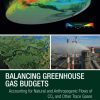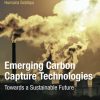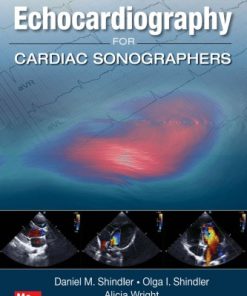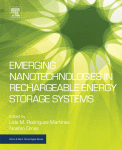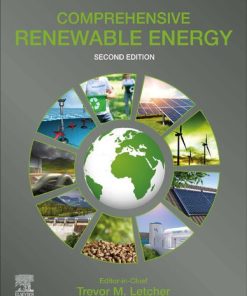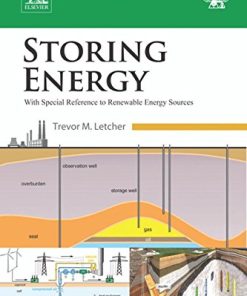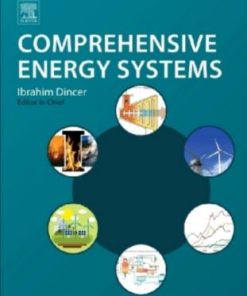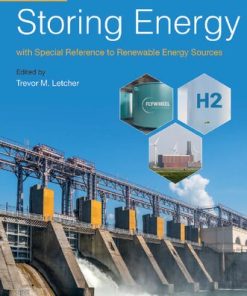Energy Efficiency 1st Edition by Daniel Martinez, Ben Ebenhack, Travis Wagner 0128123164 9780128123164
$50.00 Original price was: $50.00.$25.00Current price is: $25.00.
Energy Efficiency 1st Edition by Daniel M. Martinez, Ben W. Ebenhack, Travis P. Wagner – Ebook PDF Instant Download/DeliveryISBN: 0128123164, 9780128123164
Full download Energy Efficiency 1st Edition after payment.
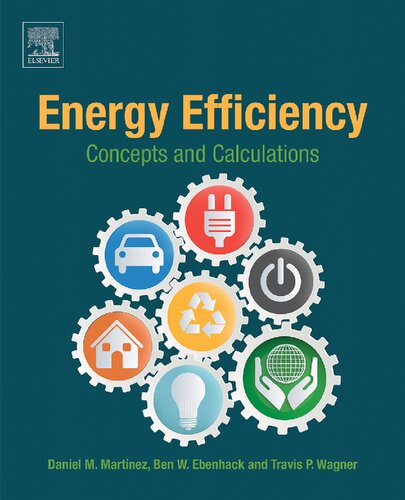
Product details:
ISBN-10 : 0128123164
ISBN-13 : 9780128123164
Author: Daniel M. Martinez, Ben W. Ebenhack, Travis P. Wagner
Energy Efficiency: Concepts and Calculations is the first book of its kind to provide an applied, systems oriented description of energy intensity and efficiency in modern economies across the entire energy chain. With an emphasis on analysis, specifically energy flow analysis, lifecycle energy accounting, economic analysis, technology evaluation, and policies/strategies for adopting high energy efficiency standards, the book provides a comprehensive understanding of the concepts, tools and methodologies for studying and modeling macro-level energy flows through, and within, key economic sectors (electric power, industrial, commercial, residential and transportation).
Energy Efficiency 1st Table of contents:
1 Introductory concepts
1.1 Defining Energy Efficiency
1.1.1 Energy Efficiency Versus Conservation
1.2 Impetus for Understanding and Employing Energy Efficiency
1.2.1 Social Factors
1.2.2 Macroeconomic Factors
1.2.2.1 Energy intensity
1.2.3 Other Kinds of Efficiency
1.3 Energy Sources and Energy Carriers
1.3.1 Primary Energy
1.3.2 Secondary Energy
1.4 The Energy Supply/Demand Chain
1.4.1 Supply Acquisition
1.4.1.1 Oil and gas exploration and production
1.4.1.2 Exploration for and evaluation of uranium deposits
1.4.1.3 Coal bed exploration and mapping
1.4.1.4 Wind speed analysis and measurement
1.4.1.5 Solar insolation mapping
1.4.1.6 Mapping river flows
1.4.1.7 Geothermal energy identification
1.4.2 Energy Extraction
1.4.2.1 Oil and gas production
1.4.2.2 Coal mining
1.4.2.3 Wind and water turbines
1.4.2.4 Harvesting raw biomass
1.4.2.5 Solar power production
1.4.2.6 Nuclear power
1.4.2.7 Geothermal production
1.4.3 Energy Conversion
1.4.3.1 Thermomechanical conversion for electricity generation
1.4.3.2 Electromechanical energy conversion for electricity generation
1.4.3.3 Refining oil into energy (and nonenergy) products
1.4.3.4 Chemical conversion of agricultural crops into fuel alcohol or biodiesel
1.4.4 Energy Processing
1.4.4.1 Electricity
1.4.4.2 Batteries
1.4.4.3 Hydrogen
1.4.4.4 Gasoline
1.4.4.5 Diesel and heating oil
1.4.4.6 Jet fuel
1.4.4.7 Wood fuel (chips, pellets, and/or sawdust)
1.4.4.8 Charcoal
1.4.4.9 Engineered biofuels
1.4.5 Energy Distribution/Transport
1.4.5.1 Natural gas pipelines
1.4.5.2 The electric power grid
1.4.5.3 Hauling coal by rail or barge
1.4.5.4 Trucking fuel to service station or homes
1.4.6 Energy End-Use and Utilization
1.4.6.1 End use
1.4.6.2 Burning fuels for space or process heat
1.4.6.3 Powering electronics
1.4.6.4 Converting electricity into light or heat
1.4.6.5 Powering an engine
1.5 Efficiency Calculation: Assessing Cumulative or Total System Efficiency
1.5.1 System Efficiency of Illumination Via Incandescent Lighting From Coal-Fired Electricity
1.5.2 System Efficiency of Illumination Via Light Emitting Diode Lighting From Coal-Fired Electricit
1.5.3 System Efficiency of Illumination Via Light Emitting Diode Lighting From Natural Gas-Fired Ele
1.5.4 System Efficiency of Illumination Via Light Emitting Diode Lighting From Solar PV Technology
1.5.5 Final Thoughts on Cumulative Efficiencies
1.6 Sources of Energy Efficiency Information
References and Further Reading
2 Dealing with energy units, measures, and statistics
2.1 The Reason for So Many Units
2.2 Systems of Measurement, Common Units, and Prefixes of Energy
2.2.1 The Joule
2.2.2 The Calorie
2.2.3 The British Thermal Unit
2.2.4 The Therm
2.2.5 The Quad
2.2.6 The Barrel of Oil Equivalent
2.2.7 The Tonne of Oil Equivalent
2.2.8 Masses of Coal Equivalent
2.2.9 Energy Content or Heating Value of End-Use Fuels
2.2.10 The Watt-Hour, Kilowatt-Hour, and the Terawatt-Hour
2.2.11 Visualizing Energy Units and Their Equivalencies
2.3 Power and Its Equivalencies
2.3.1 Load and Capacity
2.3.1.1 Building loads and equipment capacities
2.3.1.2 Electricity generation and capacity
2.3.1.3 Large-scale energy consumption and loads
2.3.2 Flux
2.3.2.1 Light and illuminance
2.3.2.2 Solar flux
2.3.3 Horsepower
2.4 Production and Consumption Definitions and Statistics
2.4.1 Resources and Reserves
2.4.2 Total Primary Energy Supply and Total Final Consumption
2.4.3 Energy Intensity
2.4.4 Per Capita Energy Consumption
2.5 Definitions and Representations of Energy Efficiency
References and Further Reading
3 Primary energy trends
3.1 Conceptualizing Primary Energy Supply
3.2 Conceptualizing Primary Energy Flows to End Use
3.3 Oil and Gas Supply and Production
3.4 Coal Supply and Production
3.5 Uranium Supply and Production
3.6 Hydropower Supply and Production
3.7 Wind Supply and Production
3.8 Solar Supply and Production
3.9 Biomass Supply and Production
3.10 Geothermal Supply and Production
3.11 Future Energy Supply and Production
References and Further Reading
4 Energy–flow analyses and efficiency indicators
4.1 Energy-Conversion Devices
4.1.1 First Law
4.1.2 Second Law
4.1.3 Common Energy-Conversion Device Efficiencies
4.1.4 Overall System Efficiency and Limiting Steps
4.2 Macroscale Energy Systems and Efficiency
4.3 Energy Flows and Efficiencies of Economic Sectors
4.3.1 Source/Sector Linkages: Primary Energy Consumption
4.3.2 Delivered Total Energy by Sector
4.3.3 Total Energy-Flow Approach
4.3.4 Sector Energy Flows and Simple Efficiency Analysis Using the Sankey Approach
4.3.4.1 Electricity sector energy-flow analysis
4.3.4.2 Transportation sector energy-flow analysis
4.3.4.3 Industrial sector energy-flow analysis
4.3.4.4 Residential sector energy-flow analysis
4.3.4.5 Commercial sector energy-flow analysis
4.3.4.6 Side-by-side sector comparisons
4.4 Summary
References and Further Reading
5 Electric power sector energy efficiency
5.1 Global Electricity Consumption: Basic Statistics
5.2 Overview of the Sector
5.3 Electricity Demand
5.3.1 Peak Demand and Load Duration Curves
5.3.2 Demand Versus Consumption
5.4 Electricity Generator Types
5.4.1 Thermal Power Plants
5.4.1.1 Coal-fired power plants
5.4.1.1.1 CFPP efficiency constraints
5.4.1.2 Natural gas power plants and operation
5.4.1.2.1 Natural gas efficiency constraints
5.4.1.3 Nuclear power plants
5.4.1.4 Concentrating solar power plants
5.4.2 Water Turbine Power Plants
5.4.3 Wind Turbine Power Plants
5.4.4 Grid-Tied Solar PV Power Plants
5.4.5 Geothermal Power Plants
5.5 Electricity Transmission and Distribution
5.6 Illustrated Calculations of Energy Flow Through Various Electric Power Generating Systems
5.6.1 Coal-Fired Power Generation
5.6.2 Natural Gas Turbine Generators
5.6.3 Solar PV Power Generation
5.7 Conclusion
References and Further Reading
6 Industrial sector energy efficiency
6.1 Industrial Sector Overview
6.2 Energy-Intensive Manufacturing Subsectors
6.2.1 Petroleum Refining
6.2.2 Basic Chemicals
6.2.3 The Iron and Steel Subsector
6.2.4 The Aluminum Subsector
6.2.5 The Cement Subsector
6.2.6 Pulp and Paper
6.2.7 Food and Beverage
6.3 Nonenergy-Intensive Manufacturing Subsectors
6.4 Nonmanufacturing Subsectors
6.5 Technology Implementation and Energy Savings Across Subsectors
6.6 Calculation: Energy Auditing and Estimating Payback for Energy Efficient Technology Adoption Dec
6.6.1 Energy Efficiency Information Programs and the Energy Audit
6.6.2 Energy Efficiency Payback Period
6.6.3 Case Study: Texas Tile Manufacturing LLC
References and Further Reading
Books and Technical Articles/Reports
Energy Information Sources and Technical Reports
Other Online Resources
7 Transportation sector energy efficiency
7.1 Transportation Sector Overview
7.2 Modes of Transport in the Sector
7.2.1 Motor Vehicles and Automotive Transportation
7.2.2 Air Transport
7.2.3 Passenger and Freight Energy Intensities by Mode
7.3 Energy Efficiency Potential in Motor Vehicles
7.4 Driving More Efficiently
7.4.1 Tips for Hybrid Gasoline/Electric Vehicles and Electric Vehicles
7.5 Calculation: Fuel Economy and Per Passenger Efficiency
References and Further Reading
8 Residential and commercial sector energy efficiency
8.1 Residential and Commercial Sector Overview
8.2 End-Use Energy Consumption in Residential and Commercial Buildings
8.2.1 Space Heating and Cooling
8.2.1.1 Space heating
8.2.1.2 Space cooling
8.2.1.3 Building thermal performance
8.2.1.4 Recent trends in heating and cooling: heat pumps and insulation
8.2.2 Water Heating
8.2.3 Appliances
8.2.4 Lighting
8.2.5 Electronic Devices
8.3 Residential and Commercial Energy Audits
8.4 Calculation: Heat Loss Through the Building Shell With and Without Insulation
References and Further Reading
Books and Technical Articles/Reports
Energy Information Sources and Technical Reports
Other Resources
9 Policy instruments to foster energy efficiency
9.1 Overview
9.2 Policy Approaches to Foster Energy Efficiency
9.3 Command-and-Control Policy Instruments
9.3.1 Mandated Minimum Efficiency Standards
9.3.2 Building Codes
9.3.3 Mandated Labeling and Information Disclosure
9.4 Market-Based Policy Instruments
9.4.1 Taxes, Tax Credits, and Tax Deductions
9.4.2 Rebates, Subsidies, and Grants
9.4.3 Time of Use Pricing
9.4.4 Tradable Allowances
9.5 Voluntary Policy Instruments
9.5.1 Education
9.5.2 Default Choice Architecture
9.5.3 Voluntary Consumer Labeling
9.5.4 Technical Support
9.5.5 Industry Challenges and Voluntary Agreements
9.6 Policy Instruments for the Transportation Sector
9.6.1 Fuel-Efficiency Standards for Motor Vehicles
9.6.2 Fuel-Efficiency Standards for Aircraft
9.6.3 Motor Vehicle Fuel Efficiency Labeling
9.6.4 Highway Speed Limits
9.6.5 Low-Efficiency Motor Vehicle Tax
9.6.6 Retiring Inefficient Motor Vehicles
9.6.7 Transportation Planning
9.7 Policies for the Energy Production Sector
9.7.1 Smart Grid Development
9.7.2 Carbon Tax
9.7.3 Carbon Emissions Trading
9.7.4 Combined Heat and Power Partnership
9.8 Policies for the Commercial and Residential Sectors
9.8.1 Minimum Efficiency Standards—Appliances
9.8.2 Lighting Efficiency Standards
9.8.3 Mandatory Energy Labeling
9.8.4 Corporate Energy Assessments
9.8.5 Efficient Appliances—Consumer Incentives
9.8.6 Residential Energy Credits
9.8.7 Energy-Efficiency Grants
9.8.8 Weatherization Assistance
9.8.9 Voluntary Energy Labeling
9.8.10 Efficient Lighting Challenge
9.8.11 Better Buildings Challenge
9.8.12 Third-Party Certification Programs
9.8.13 Technical Assistance
9.9 Conclusion
People also search for Energy Efficiency 1st:
devon thermal imaging energy efficiency
how to calculate energy efficiency
define energy efficiency
is energy efficiency being sulit
explain how increased energy efficiency is beneficial
Tags: Energy Efficiency, Daniel Martinez, Ben Ebenhack, Travis Wagner
You may also like…
Business & Economics
Corporate Board of Directors: Structure and Efficiency 1st Edition Ismail Lahlou
Engineering - Energy & Power Resources
Comprehensive Renewable Energy (Nine Volume Set) 2nd Edition Trevor M. Letcher
Engineering
Storing Energy. With Special Reference to Renewable Energy Sources 1st Edition Trevor M. Letcher
Biology and other natural sciences - Ecology
Technique - Energy: Renewable Energy
Comprehensive Energy Systems, vol.5 1st Edition – Energy Management 1st Edition Canan Acar
Uncategorized
Storing Energy: with Special Reference to Renewable Energy Sources 2nd Edition Trevor M. Letcher


